Most come to Xi’an (pronounced shee-an) only for a day to see the Terracotta Army, but they are unaware of everything to see in this 3,000-year-old city. Here I’ll go over the best of what to see and do in Xi’an so you don’t make the same mistake so many other travelers make – skipping out early thinking there is only one thing to see.
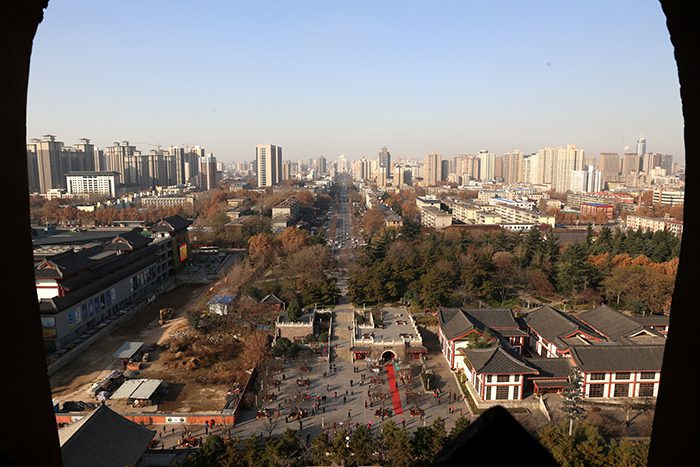
Facts about Xi’an:
Today, Xi’an has a population of approximately 8.5 million people. But while Xi’an is a very large city, finding your way around it will be a breeze if you use the GPSmyCity app, an innovative travel companion that is a must for all tourists. This easy-to-use app, which is available on both iOS and Android and can be used offline, literally turns your phone or tablet into your own personal tour guide with nearly sixty app features including a map that moves as you move thanks to auto-tracking; directions to local sites including shops, museums, restaurants, landmarks, and other popular attractions; and even an option to connect with local guides who can give you the inside scoop on the city that only locals are privy to. With GPSmyCity, you’ll never have to worry about getting lost in Xi’an, or thousands of other cities around the world, ever again, and can instead keep your focus on what makes the city such an incredible location: its millennia of history, which has earned Xi’an the nickname “the eternal city.” Here’s what to see and do while you’re there!
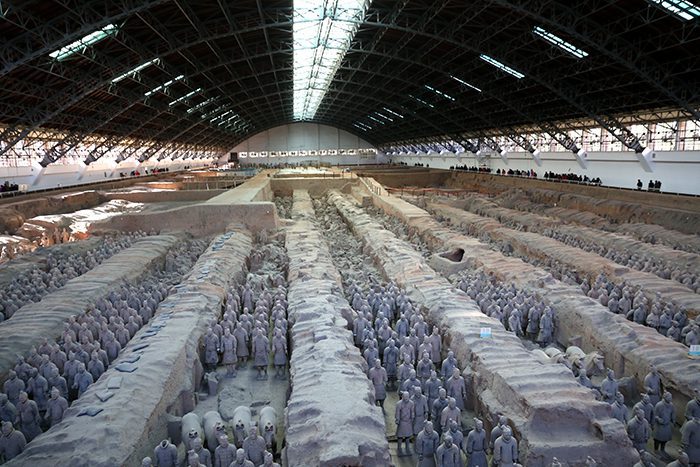
The Terracotta Warriors Museum is the main attraction in Xian. It is a collection of sculptures depicting the armies of Qin Shi Huang, the first Emperor of China. The original site was discovered by peasant farmers in 1974 as they were digging a well near the royal tomb. This immediately caught the attention of archaeologists who came to expand the digs and discover the funerary art of the soldiers whose purpose was to protect the emperor in his afterlife. In 1987, it was listed as a UNESCO World Cultural Heritage Site.
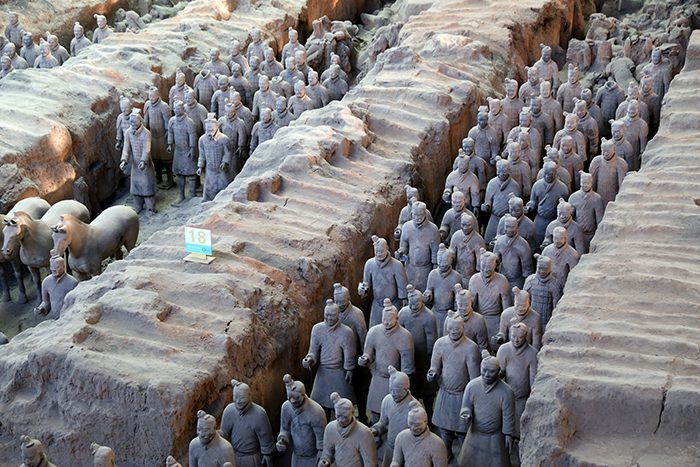
The site is located just about 30 km from Xian city. The museum includes Pit 1, Pit 2 and Pit 3 as well the exhibition hall of the chariots and horses. The Pit 1 is the largest of the three. However, since it’s the major tourist attraction in the area, the museum is bound to be very busy. To beat the crowds, you can visit the pits in reverse order, saving the pit with the most warriors for last.
Don’t forget to check out JetSet LifeStyle Blog!
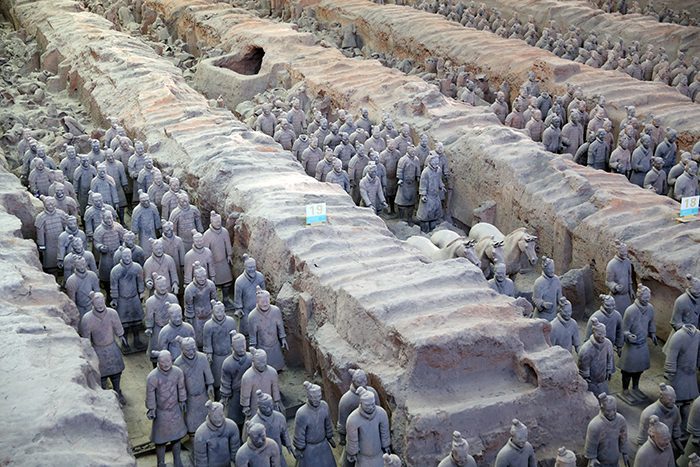
You can also visit the museum immediately after lunch, a time when its usually the most quiet. This is to avoid all the tour groups as this will help you cut down the stress levels and give you a chance to take the best photos. Check out these tours in China.
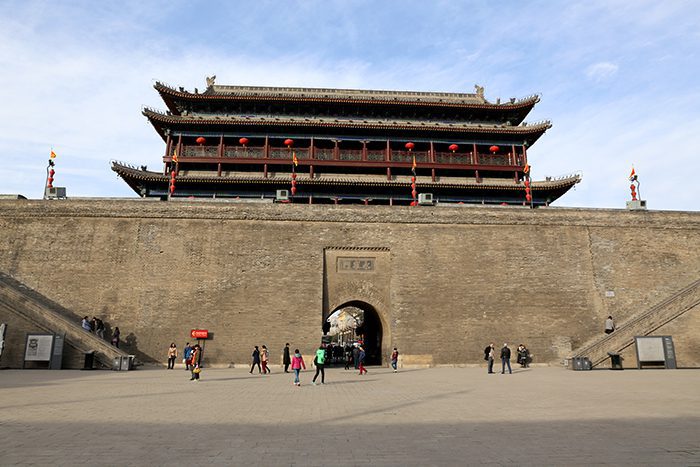
Surrounding the old part of Xi’an are the original fortified city walls, which date back to the 14th century. They were constructed under the Ming Dynasty to protect the city from invaders. Later, they were reinforced and extended by the Tang Dynasty.
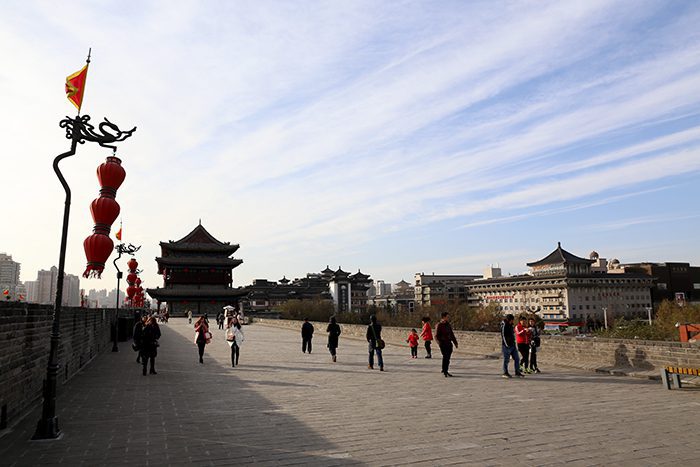
Nowadays, the city walls have an impressive height of 40 feet and a thickness of 40-60 feet. They span for nearly 9 miles and are surrounded by a deep moat. The walls feature a total of 98 ramparts and four main gates – North, South, East and West. Each gate has three towers that served as watchtowers and used to open/close the suspension bridges that granted access to the city.
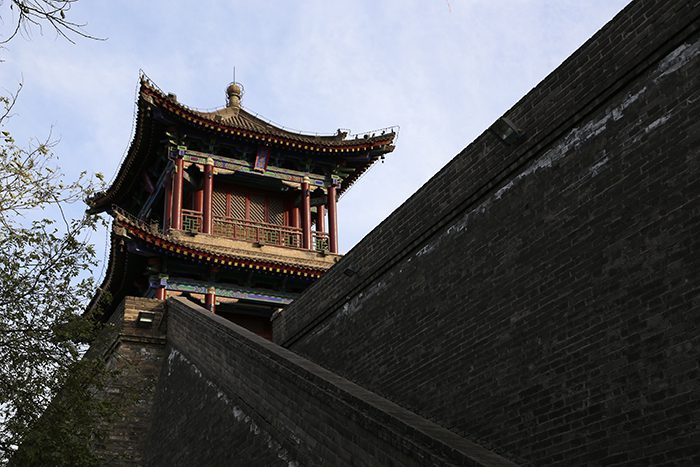
The South Gate (Yongning) is the most beautiful gate of the city. It leads to South Gate Square and has two free museums located inside its archery tower. The South Gate is situated near the Bell Tower.
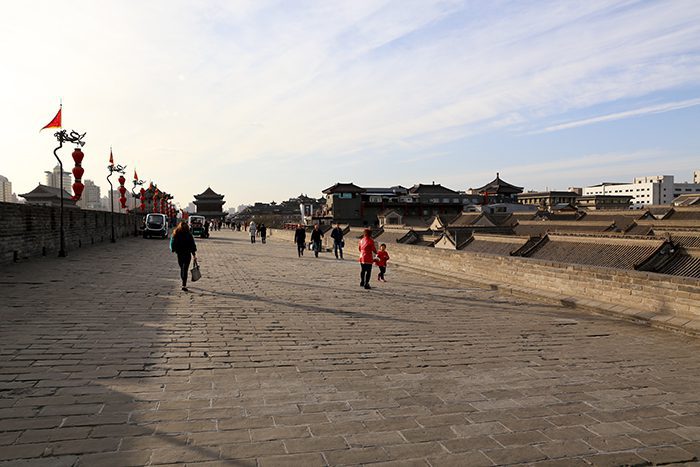
It is possible to walk or bike along the city walls. If you choose to go by foot it will take you approximately 4-5 hours to complete the walk. You could just as easily choose to stroll the landscaped parks along the base of the exterior. Bike rental cost is ¥45 for 2 hours (just about the amount of time you’ll need to bike the city walls). Along the way you’ll get great views of Xi’an.
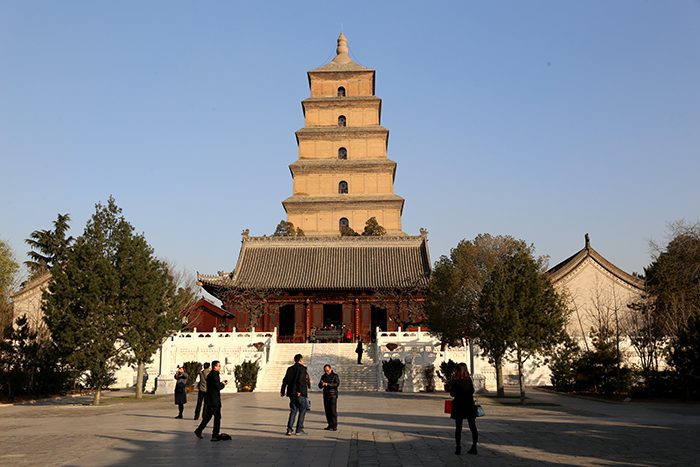
The Big Wild Goose Pagoda is a UNESCO World Heritage Site located inside the Da Ci’en Temple Complex, approximately 3 miles south of Xi’an city center. This Buddhist landmark was built in 652 by Emperor Gaozong of the Tang Dynasty to hold Buddhist texts and religious items brought back from India.
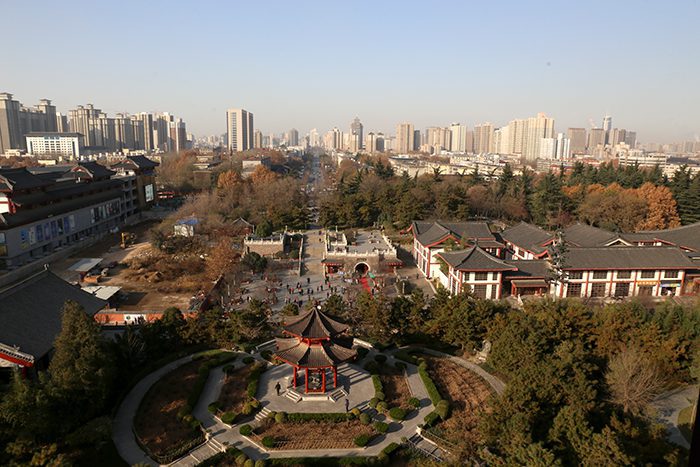
Ultimately, the pagoda had to be completely rebuilt in the year 704 by Empress Wu Zeitan. Throughout the years, the pagoda has had to be rebuilt and repaired due to earthquakes. Currently it stands 7 stories tall at a height of 210 feet, and has a square pyramid shape. If you look closely you’ll notice it has an obvious lean. It costs ¥50 to enter the complex and another ¥20 to climb up to the top of the pagoda.
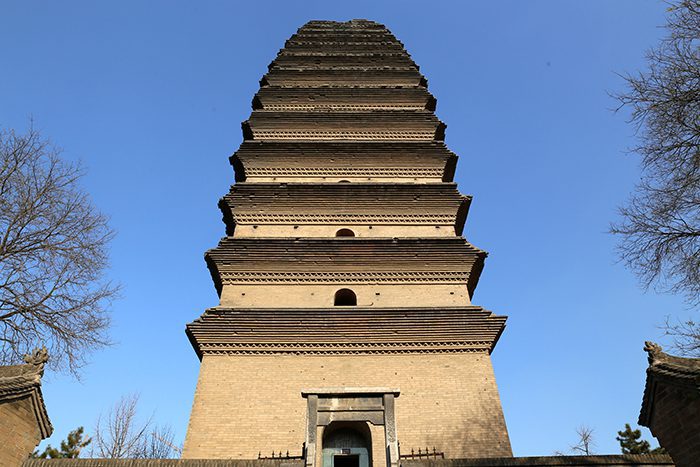
Northwest of the Big Wild Goose Pagoda is the Small Wild Goose Pagoda, another UNESCO World Heritage Site that dates back over 1,300 years to the Tang Dynasty. Like its larger counterpart, it was built to store Buddhist texts from India.
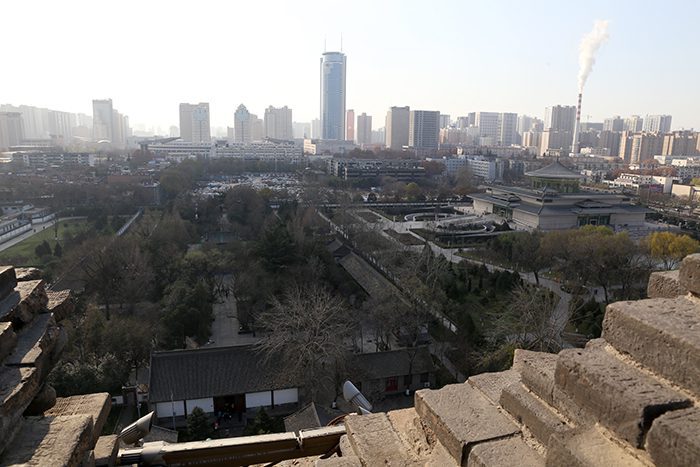
Originally, it had 15 stories and stood at a height of 148 feet. Earthquakes have since destroyed the two upper stories. It now stands 13 stories tall. The pagoda’s curved appearance is characteristic of Tang Dynasty architecture. This building method allowed for structures to survive violent earthquakes with relatively little damage. The fact that the Small Wild Goose Pagoda only lost two stories since the 8th century says a great deal about its unique design.

It is possible to ascend to the top of the pagoda, but the stairwell is quite narrow. The platform at the top is only large enough for 10 people at a time, but on a clear day it’s possible to get panoramic views of the city. Admission is free to see the pagoda. The cost to go up to the viewing platform is ¥30.
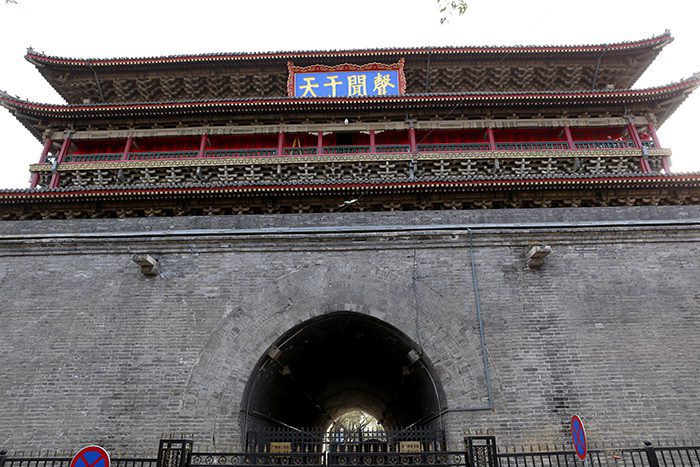
The Xi’an Bell Tower is an important landmark – it marks the smack center of the ancient capital of Chang’an. Like the Bell Tower in Beijing, Xi’an’s Bell Tower was used to signal different times throughout the day. Both were built under the Ming Dynasty.
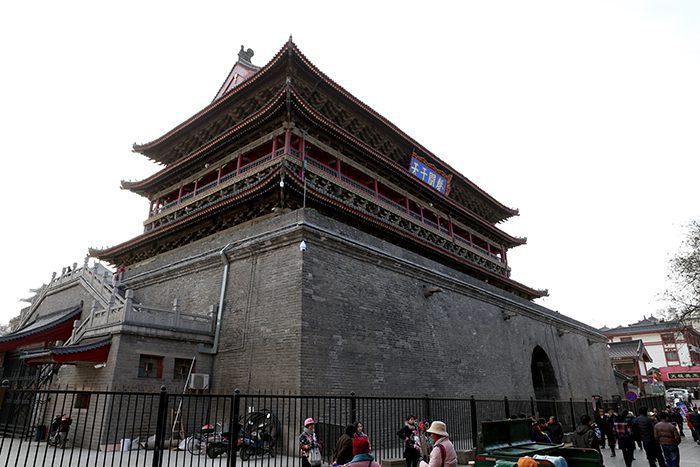
The Xi’an Bell Tower stands 118-feet-tall. Inside, there is a replica of the original 8-foot-tall bell known as the Jingyun Bell. The tower itself is made of wood and features three eaves covered in green tiles and gold-plating.
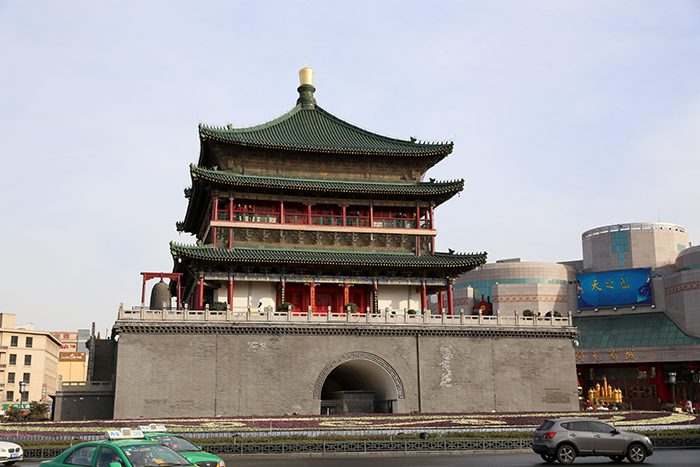
Near the Bell Tower is the Drum Tower, another 14th century construction credited to the Ming Dynasty. One interesting fact about it is that not one nail was used in its construction! The Drum Tower houses the largest drum in China. It sits on the edge of the city’s popular Muslim Quarter. Admission to the Bell Tower is ¥35 or ¥50 for a joint ticket to see both the Bell and Drum Towers.
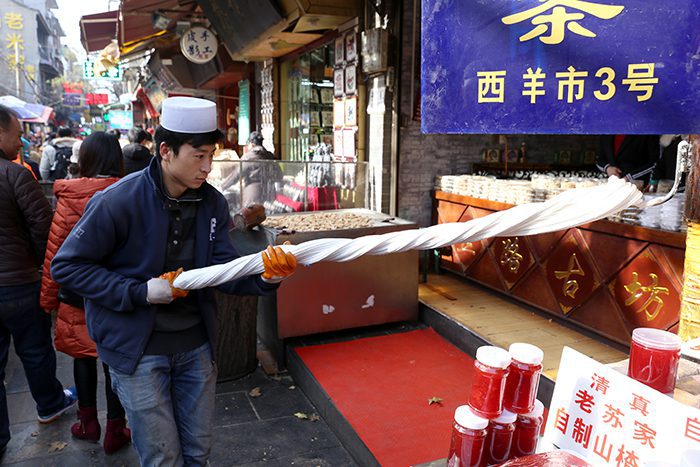
Centuries of being on the Silk Road, in addition to a sizeable Muslim population, have greatly influenced the cuisine in Xi’an. For this, the city is a food lover’s paradise. Most visitors enter the Muslim Quarter via the Drum Tower. Here, it’s all about the food!
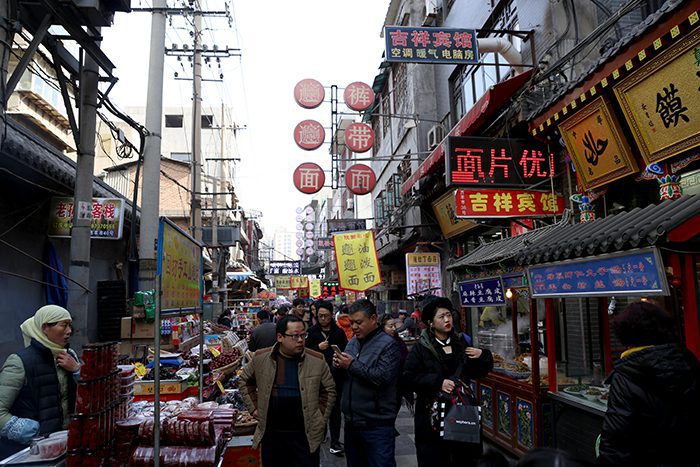
The Muslim Quarter is a bustling array of restaurants and food hawkers selling foods such as spicy lamb skewers, beef skewers, Shaanxi sandwiches (Chinese hamburgers), dumplings, noodle bowls, Roujiamo (steamed bread sandwiches stuffed with shredded beef), prune juice, spiced fried potatoes, and desserts of all types. Since it’s a Muslim neighborhood, don’t count on having any pork.
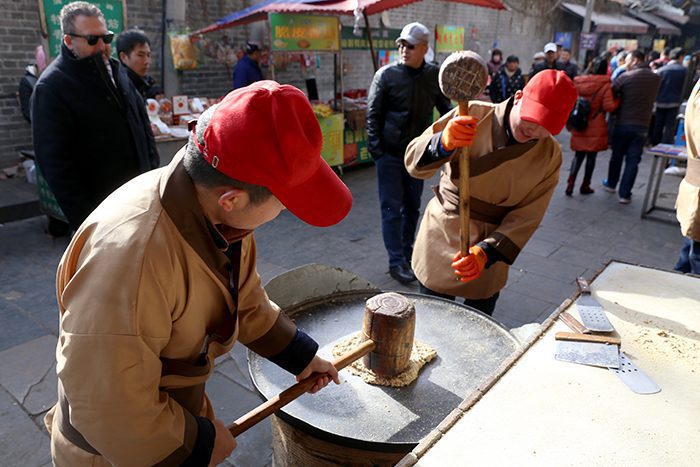
If you plan to visit the Muslim Quarter just to eat, we strongly suggest you come in the late afternoon, before 7:30 pm, to avoid the dinnertime crowds.
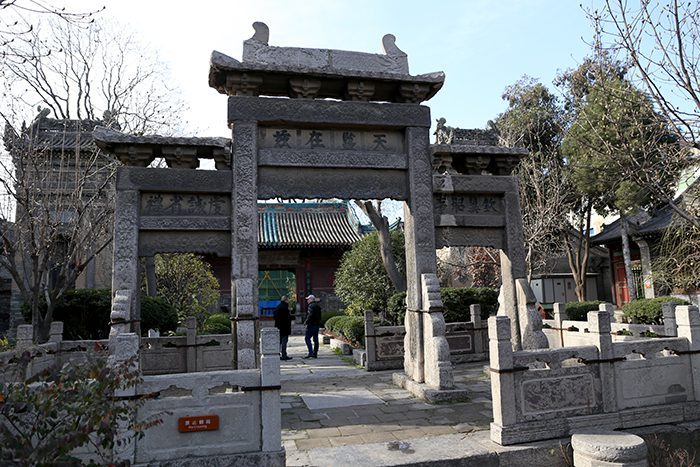
Another must-see attraction in the Muslim Quarter is The Great Mosque – one of the largest and best-preserved mosques in China. Located on Huajue Lane, the Great Mosque was built in 742 under the Tang Dynasty for the Arab merchants that were arriving from Persia and Afghanistan via the Silk Road. Many of them stayed in Xi’an, and today, centuries later, their descendants form part of the city’s Muslim community.
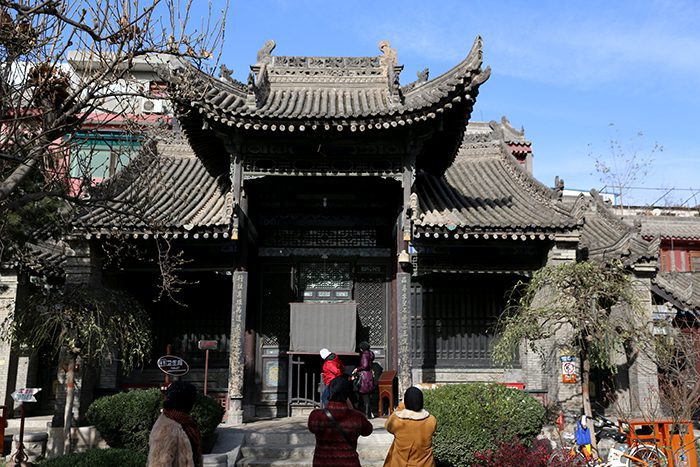
The Great Mosque doesn’t look like a typical mosque with domes and minarets. Instead, its design is traditional Chinese. Wooden arches, landscaped gardens, pavilions, and glazed tiles are some of its architectural details. Admission to the Great Mosque is ¥25.
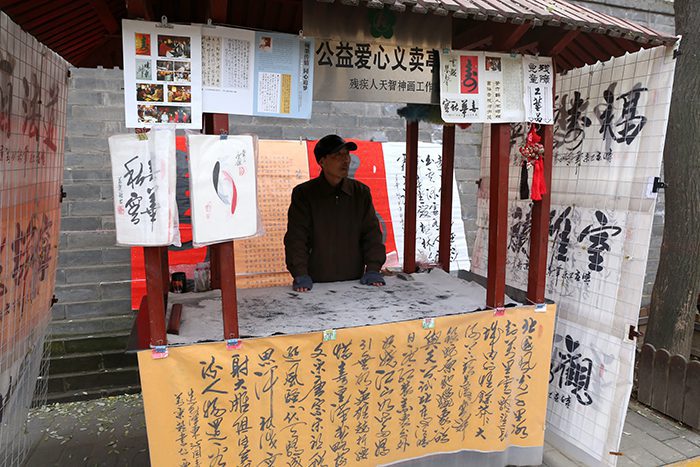
Shu Yuang Meen Street, also popularly known as the “Calligraphy Street”, is an authentic destination for hand crafted products in Xi’an. It’s built in the ancient Chinese style, and is located behind the Steles Forest. The street is famous for its collection of calligraphy, and it’s flanked by over 100 shops in the Ming and Qing styles that sell rubbings from stone inscriptions, paintings and calligraphic works by celebrities, and books of ancient seals. This is definitely an authentic destination for hand crafted products and it reflects the richness of traditional Chinese crafts.
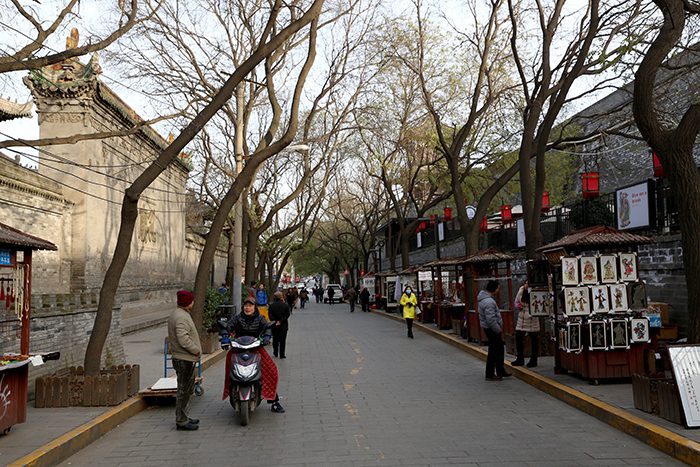
Here, you can watch people make souvenirs as you buy them. You will find artists painting, making stamps (traditional Chinese things made from marble), practicing calligraphy, and so on. You can take a peaceful walk here as the place is not crowded and the general ambiance is calm and open minded. Shopkeepers here aren’t pushy and you can pick up a nice jade bracelet or painting for a reasonable price. The stalls close early, around 6 pm, but stick around for some street bbq! Definitely a nice place to mooch around, perhaps after visiting the Wall at the South Gate.
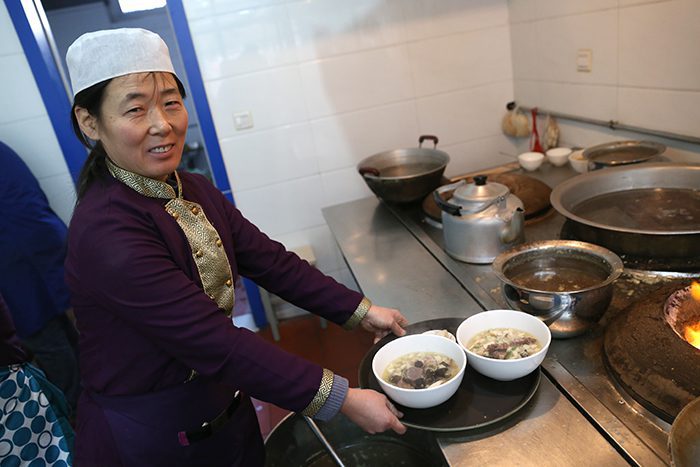
For tasty Chinese Cuisine, pay a visit to Cheng Cheng Restaurant. It is a traditional one big room restaurant whose speciality is mutton soup. This is because Mutton Soup is part of the locals favourite food, Yangrou Paomo. This is basically flatbread that is usually soaked in mutton broth. Enjoying one with Cheng Cheng Restaurant’s delicious soup is an enjoyable and relaxing experience.
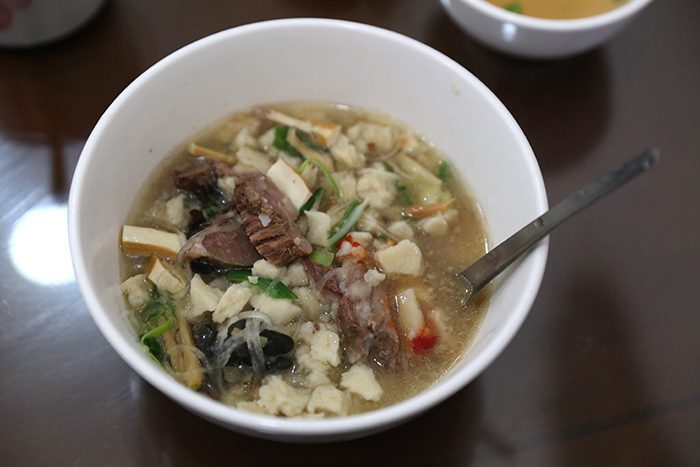
Being an area of focus for them, you can surely expect to be served with some of the most delicious mutton soup in Xi’an. As their trademark, they like to put spices to really give it a kick! Additionally, the staff is friendly, and the ambiance is very rustic and charming. You surely don’t want to leave Xi’an without a taste of mutton soup at the Cheng Cheng Restaurant.
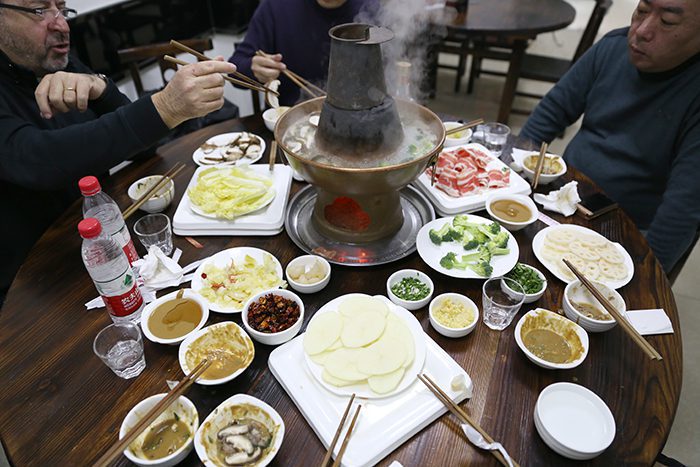
While in Xi’an, we visited the Beijing Lamp Restaurant. It is a traditional restaurant that is famous for their Lamb hot pot. It is a popular dish in Xi’an, and its mostly enjoyed during the cooler months of the year. Their lamb hot pot is usually steaming hot and seasoned to perfection. It is usually accompanied with paper-thin slices of tender mutton, and they give you some peanut sauce dressing to dip the lamb in.

It produces a mouth-watering aroma and a zesty flavor that only leaves you craving for more. We really enjoyed and ate so much to carry us through possibly to our next visit in China! This is definitely the best spot for delicious lamb hot pot while in Xi’an. There are also other foods served here and they are as well great. The price/ performance ratio is exceptional, and you’ll walk out of there satisfied.
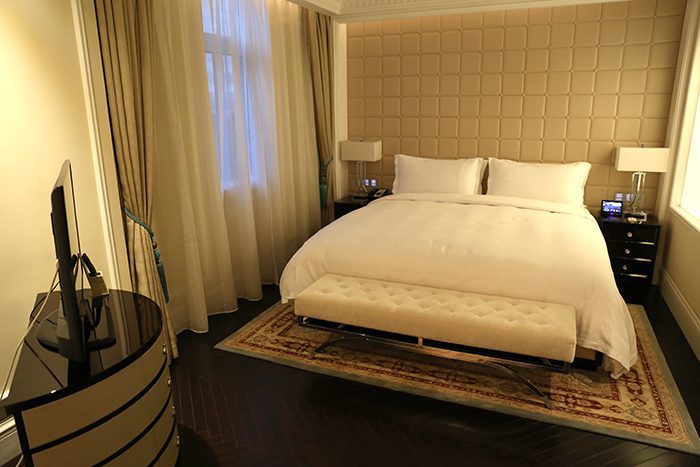
The Sofitel Legend Peoples Grand Hotel Xi’an is an iconic hotel in Xi’an where heritage meets modernity. The hotel was established in 1953 and has since been refurbished into an ultra-luxury hotel. Apart from it being everything you’d want in a hotel, it is centrally located in the heart of Xi’an, which makes it very accessible. From there, it’s only 45 minutes to the airport and the Terracotta Warriors. It features an Italian restaurant, bars, cigar lounge, spa and state-of-the-art facilities.
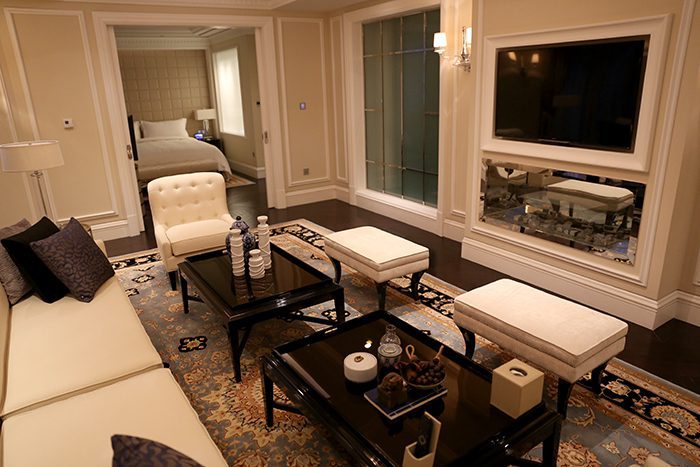
The hotel boasts elegant decorations and garden views, and the rooms feature king-size beds, air conditioning, a flat-screen cable TV, a sofa and a safety deposit. The gardens and the general ambiance of the hotel have a character and soul that you can feel. You are bound to have an outstanding experience just like we did. One of the hotel’s many highlights for us was the amazing service provided by the friendly and attentive staff. We would definitely stay there again!
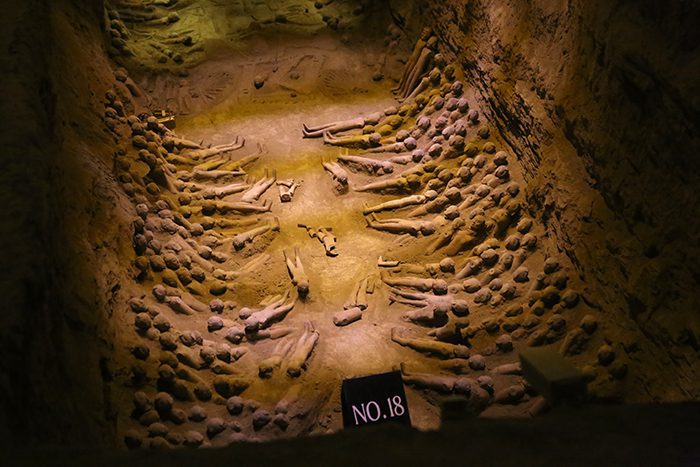
Better known by the locals as Hanyangling, the Yangling Mausoleum is the burial place of Emperor Jing, who was the fourth emperor of the Western Han Dynasty and his Empress Wang. It is located in the Weicheng district on the bank of Wei River and its just about 20 km to the north of the city center. The tombs were built in the 153 BC and they span 20 square kilometers. Today, the Mausoleum is a combination of a history museum, modern technologies, ancient civilization, historical culture and garden scenery.

Just like in Terracotta warriors, there are also soldiers here, horses, other small animal and artifacts that were buried with the Emperor. These are well preserved in an underground museum that was built directly over one of the excavation sites. The museum floors are made of glass just to separate the Museum form the excavation area. The whole site presents brilliant relics that you shouldn’t miss while in Xi’an, and they also give you a good understanding the Chinese way of living during this time.

Cave dwellings in Xi’an have been in existence for over 4,000 years. Most of these dwellings are found in the Yan’an and Yulin districts. This is because these districts are in the Loess plateau which is sticky and hard, and it can’t collapse easily. Cave dwelling were carved from mountains, or were earthly caves consolidated with stones or bricks to make some amazing surfaces. Today, there are so many cave dwellings spread over the Loess Plateau that house more than 40 million residents!
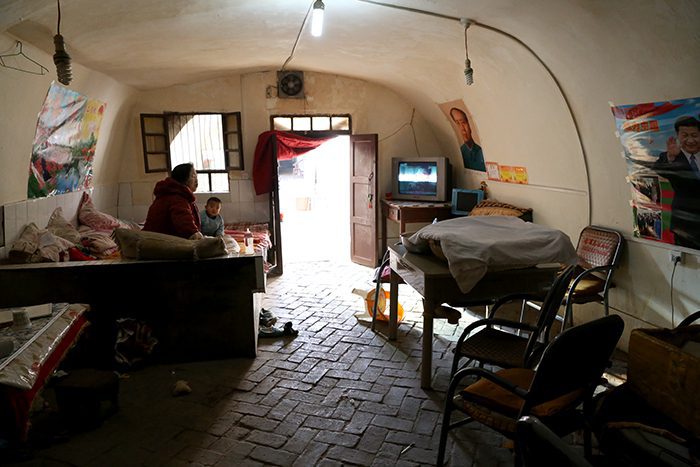
It is a great experience visiting these traditional cave livings and actually many come here to experience the cave dwelling life. Raphael our English speaking guide made the experience fantastic, and you should actually consider hiring him. We went to his family’s cave, where he lived for 9 years during the Cultural Revolution. One factor that makes this caves amazing is their convenience in supporting different weathers. They are usually cool in summer and warm during the winter. They are also good for health and longevity, as climate change and radioactive material of the atmosphere have less impact on cave dwellers. Make sure you don’t miss this amazing experience on your trip to Xi’an.
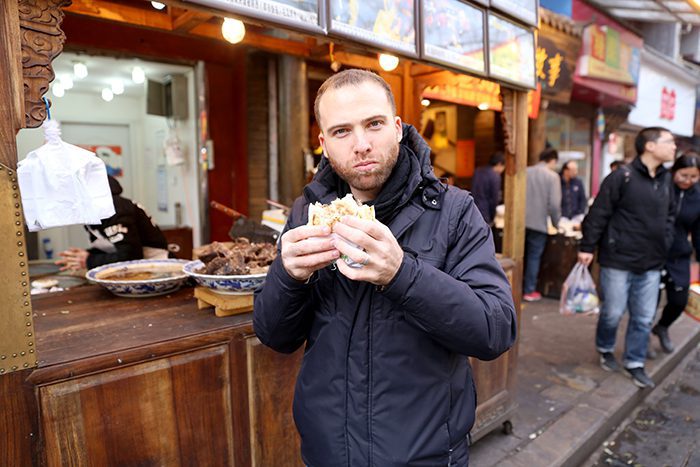
Our stay in Xi’an turned out to be an awesome experience and a great initiation to the Chinese culture and history. We were able to explore this ancient Chinese capital to the fullest, not just the Terracotta warriors and we hope you do so too. Taking a private tour with a knowledgeable tour guide will make your journey hassle-free and help you learn about the splendid history and culture of Xi’an. Plan your itinerary and don’t forget to add these amazing things to do in Xi’an, and I’m sure you will love the city like we did!
NOTE: Whenever you travel, I suggest you purchase travel insurance to protect yourself in case any emergency situations come up. In my opinion, AXA Travel Insurance is the very best because it covers a wide array of issues. Buy your AXA Travel Insurance protection plan here!
Have you ever visited Xi’an? Share what to see and do in Xi’an, China!
Counter
101 Countries • 1432 Cities
John says:
Thanks for the great post, can’t wait to get to Xi’an! Question regarding Cheng Cheng Restaurant, can I assume it’s in the Muslim Quarter somewhere? Do you have an address or street name, by any chance? Google isn’t helping 🙂
Stacey Valle says:
Hi!! I’m going to Xi’an soon, and your list got me excited, especially Cave dwellings since that’s something I don’t see on other blogs when making a list what to see. Do you know whether it is possible to see cave dwellings myself than using a guide? Because a guide isn’t accommodating for me as a Deaf traveler, thank you!
Tonkin Voyage Travel says:
The streets in Xian looks so peaceful and enjoyable. It’s not crowded as in Beijing or Shanghai. I will travel to this city in this Autumn, may be at the beginning of November. Thanks so much for your sharing and keep moving!